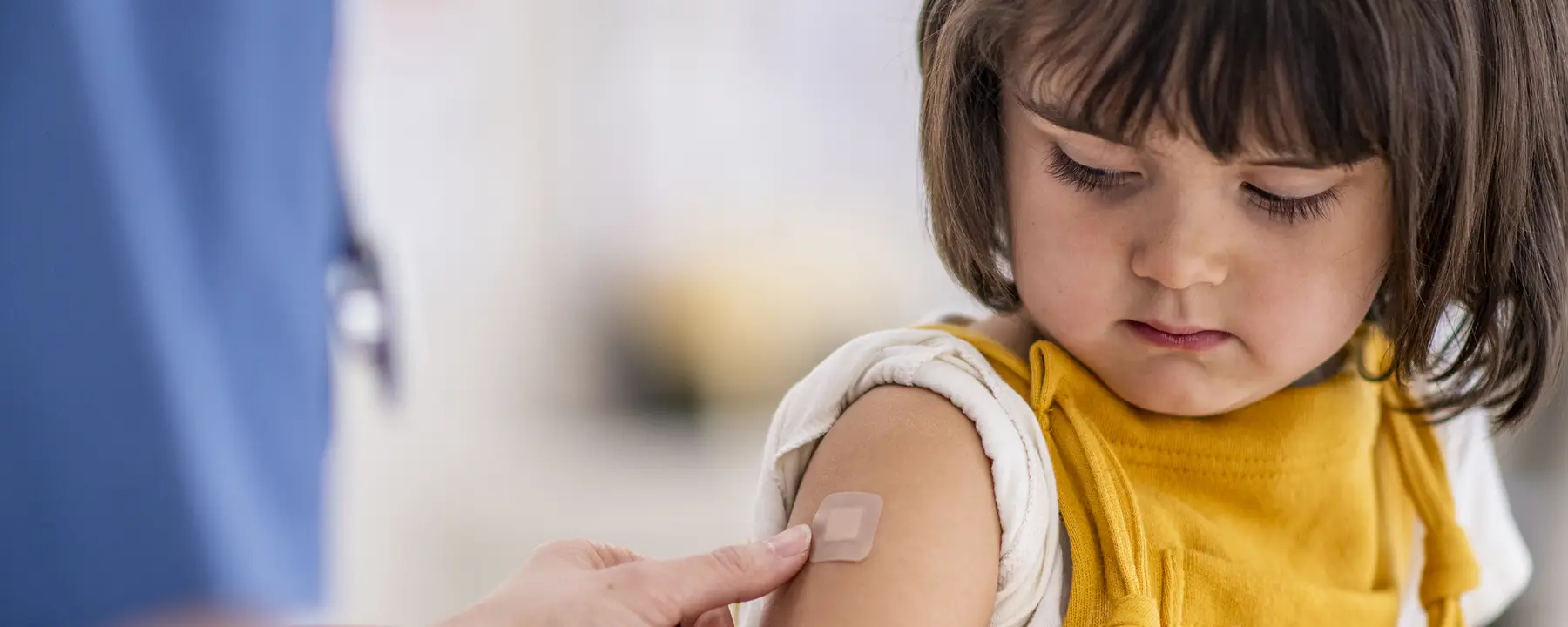Measles outbreaks drive study of mothers’ decision-making about childhood vaccines
In the first six months of 2019, more than 1,000 cases of measles were reported in the United States. This illustrates a growing trend of measles outbreaks in the U.S. over the past several years. For example, 855 cases of measles were reported in the U.S. in 2014 and 2015 combined, many of which were linked to a well-publicized outbreak that originated in Disneyland in Anaheim, California. With the uptick of measles incidences and public discourse about vaccines, there is a renewed urgency to understand how parents are consuming information and making decisions about vaccinating their children.
Why Are Vaccines So Important?
Public health officials argue that vaccines are one of the greatest public health interventions in modern history. The Centers for Disease Control and Prevention (CDC) recommends immunization schedules for children for vaccine-preventable diseases (VPDs), including measles, polio, hepatitis, and chicken pox. States are responsible for making and enforcing vaccine mandates. Many states enforce vaccination mandates by requiring proof of vaccination for children to enter kindergarten. However, in 15 states, parents can seek nonmedical exemptions based on philosophical, personal, moral, or other beliefs.
Some children cannot be vaccinated due to immunocompromising medical conditions or because they are too young to receive certain vaccines. For example, the CDC recommends that children receive the first dose of the measles, mumps, rubella (MMR) vaccine when they are 12 to 15 months old, leaving children younger than 12 months susceptible to the highly contagious and airborne measles virus. These children rely on herd immunity, or the immunization of a critical mass of individuals in their community, to decrease their risk of exposure to VPDs. Herd immunity requires approximately 83%-94% of a population to be immunized for a community to be resistant to an outbreak, depending on the disease.
To prevent the transmission of measles in a community, 93-95% of the population needs to be immune. The measles, mumps, and rubella (MMR) vaccine, which was responsible for the previous elimination of measles in the United States in 2000, has been under the spotlight since it was falsely linked to an increased risk of autism spectrum disorders. The spread of this misinformation has undermined the public health benefit of vaccination. With a growing number of communities falling below 93% MMR vaccine coverage, the risk of widespread outbreaks is increasing.
What Can We Do to Prevent Outbreaks?
The CDC’s recommended childhood vaccination schedule was designed to safely immunize children, prevent the spread of VPDs, and save lives. Few interventions have been developed and tested to increase adherence to recommended childhood vaccination schedules. With the re-emergence of VPD outbreaks, including measles, research is needed to inform the development of new and effective communication strategies to address factors underlying nonadherence to the recommended childhood vaccine schedule.
To begin addressing this gap, RTI conducted a pilot study to explore knowledge, attitudes, and beliefs that influence mothers’ decisions to avoid, delay, or follow recommended schedules for childhood vaccinations.
What Were Mothers’ Concerns About Childhood Vaccination and Preferences for Communication?
We conducted in-depth interviews with 24 mothers who had differing attitudes and beliefs about childhood vaccination. Eight of the mothers were avoiders, who refused or planned to refuse vaccination; 8 were hesitators, who delayed the recommended vaccination schedule and/or chose which vaccines to administer and when to do so; and 8 were converters, who initiated vaccination for their children in the past 2 years after a previous period of avoidance or hesitancy. We sought to identify information sources that mothers use when deciding whether to follow the recommended vaccine schedule and their concerns and preferences for communication about vaccines.
The mothers we interviewed chose to avoid or delay vaccinating their children because of their concerns about the safety of vaccines, including additives in vaccines and/or the perceived link between vaccines and autoimmune and autism-spectrum disorders and/or allergies. Most of the converters we interviewed reported that their concerns were alleviated after reading additional information on vaccine safety, and several reported that their decision to vaccinate their children was in direct response to the 2014-2015 measles outbreak.
Pediatricians play a central role in both providing information about vaccines to parents and supporting parents’ decision-making. Mothers we interviewed reported that positive relationships and shared decision-making with their child’s pediatrician were important factors in their decision to vaccinate their children. This finding suggests that training pediatricians to enhance their listening and shared decision-making skills for communicating vaccine risk and safety information is one opportunity to support mothers who may be leaning toward vaccination but have not committed.
Mothers consulted many information sources beyond pediatricians. The mothers we interviewed sought information from a variety of sources, and about half said that they consulted more than one source to fact check information. Official sources, like the CDC website, were consulted more by the convertors we spoke with than by the hesitators or avoiders. The hesitators and avoiders we spoke with more frequently looked for information on social media sites, like Facebook, and on blogs.
What Could Improve Communications About Vaccines?
Findings from our study suggest several strategies to improve communication, including:
- Provide information to mothers and give them time for questions before their child visits the pediatrician’s office for a vaccination
- Make information about vaccine ingredients, side effects, and the advantages and disadvantages of vaccination more transparent
- Ensure messages about ingredients, side effects, and the advantages and disadvantages are derived from unbiased evidence, citing distrust of studies sponsored by the government and pharmaceutical industry
- Use plain language and make messages brief
- Change the tone of messages to be more engaging, personal, and sympathetic to mothers’ concerns
- Tailor messages to address the concerns of mothers with different attitudes and beliefs about vaccinations
These recommendations can be used to inform the development of communication messages for parents who are concerned about childhood vaccination. In this age of rapid information sharing on social media and other online platforms, there is a great need to develop accurate, credible, understandable, and shareable information about vaccines that can be disseminated quickly using parents’ preferred communication channels. Furthermore, health care providers can also apply some of the findings from this study to improve their messaging strategies and approaches for communicating with parents about vaccination. As vaccine hesitancy grows in the wake of misinformation about vaccine safety and the number of measles cases continue to rise as a result of insufficient vaccination coverage, effective communication with parents, health care providers, and the public is critical.
- RTI-funded


